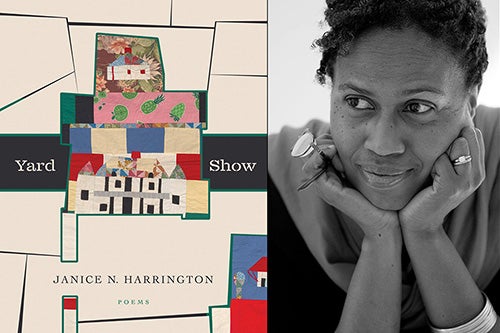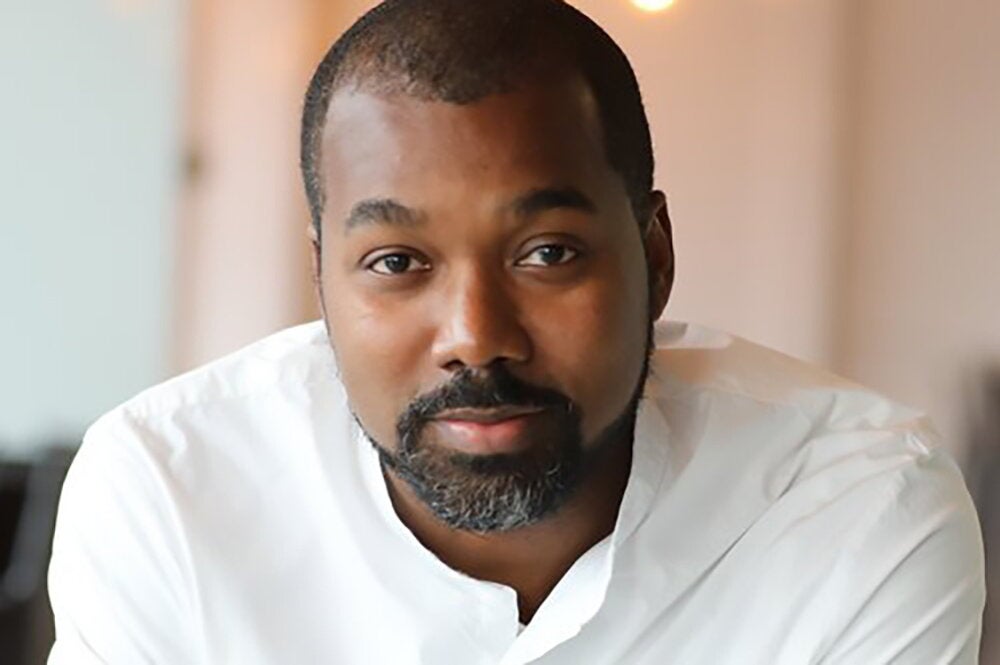

English professor Janice Harrington examines the natural world, the histories of Black residents in the Midwest, and how people create a sense of place for themselves in her most recent book of poetry, “Yard Show.”
The book was on the longlist for the 2024 National Book Critics Circle Award and was awarded the 2025 Anisfield-Wolf Award for Poetry.
The book’s title comes from the Southern tradition of “yard shows,” in which homeowners decorate their yards with flowers, shrubs and planters, figurines, lawn animals and ornaments, fountains. and everyday objects. Harrington said she is fascinated by yard shows, which she described as works of folk art.
“If you stopped and talked to the person who built that yard, they might be able to tell you, ‘That milk can is from my old uncle’s farm.’ Everything would have meaning and significance to that person,” Harrington said. “There are not a lot of yard shows in the Midwest, but I have found some yards that show that exuberance and that private storytelling and myth making. They bring all these strange things together and make meaning out of them.”
Yard show creators are mostly women, and they keep their neighborhoods alive, she said.
“The roses they put out, the lawn ornaments all over the place, are saying the world doesn’t have to be ugly. They created these sanctuaries and safe places,” Harrington said. “The women that I’ve met who are raising these fabulous gardens and roses in the midst of what looks like a lot of despair are these incredible beacons of hope.”
Her poem “Yard Sale I” is written from the point of view of a woman who built a yard show. The last lines of the poem read: “No one studied her lived aesthetic, / or read in topiaries and painted sculpture / a manifesto: I like to do it my own way. / No one thought Giverny, Casa Azul, or / Aix-en-Provence, or said opus — / it was just a yard, flowers, /and lawn ornaments. / This Black particular. / This Black woman — / pleasing no one but herself.”
Harrington said she sees her poetry as a kind of yard show made from words, stories and memories, all of which “have given me a better sense of where I live and the people and the complexities and the enrichment. Maybe Illinois has become my own yard show.”
Harrington loves the natural environment of the prairies and has learned the names of prairie plants, but she was horrified to find many of the nicknames of the plants were racial slurs. Her poem “Anything Dark Bears the Name” lists the common names of prairie plants and their racist nicknames.
“Now when I look at the prairie, I see the beauty, but I also see this subtext there as well,” Harrington said.
She also is interested in Black history in the Midwest and the Great Migration. She wanted to look at Black communities outside of urban areas such as Chicago. She visited Pembroke Township in Kankakee County, which hosts an annual Black rodeo, and the site of a race riot in the early 1900s in Springfield. She wrote about the Brushy Fork Cemetery, also known as the “Old Negro Cemetery,” in Newman, Illinois, and the convergence of churches and strip clubs in Brooklyn, Illinois. In every Black town she visited throughout the Midwest, she found a church.
“That tells me a lot about faith and endurance and how to make place, by having something to believe in,” Harrington said.
“What I learned was, place is a verb. Your sense of belonging is something you have to make with your own two hands,” she said.
In her own yard, she has a small garden of prairie plants, such as coneflowers, prairie asters, and black-eyed Susan, as well as primroses, hostas, “and some weeds.”
The poem from the book that Harrington likes the best, whose two short lines open the book, is “A Wasp:” “settles on my eyelid — but / when is attention ever without risk?”
“That sums up the whole book for me,” Harrington said. “If you go out and you look at the world around you and use your senses in the world around you, it’s going to change you and you’re going to change the world a little bit too.”
Harrington was awarded a 2020 Guggenheim Fellowship, which supported the research for her book.


